Avoid losing your email account through fake "Suspension Notice" emails
Phishing/ScamAlso Known As: "Suspension Notice" phishing email
Get free scan and check if your device is infected.
Remove it nowTo use full-featured product, you have to purchase a license for Combo Cleaner. Seven days free trial available. Combo Cleaner is owned and operated by RCS LT, the parent company of PCRisk.com.
What kind of email is "Suspension Notice"?
Our inspection of the "Suspension Notice" email revealed that it is spam operating as a phishing scam. This fake letter is presented as a notification from the recipient's email service provider stating that their account has been marked for suspension. Through a bogus verification process, this scam extracts victims' email log-in credentials (passwords) - thereby allowing the scammers to steal the exposed accounts.
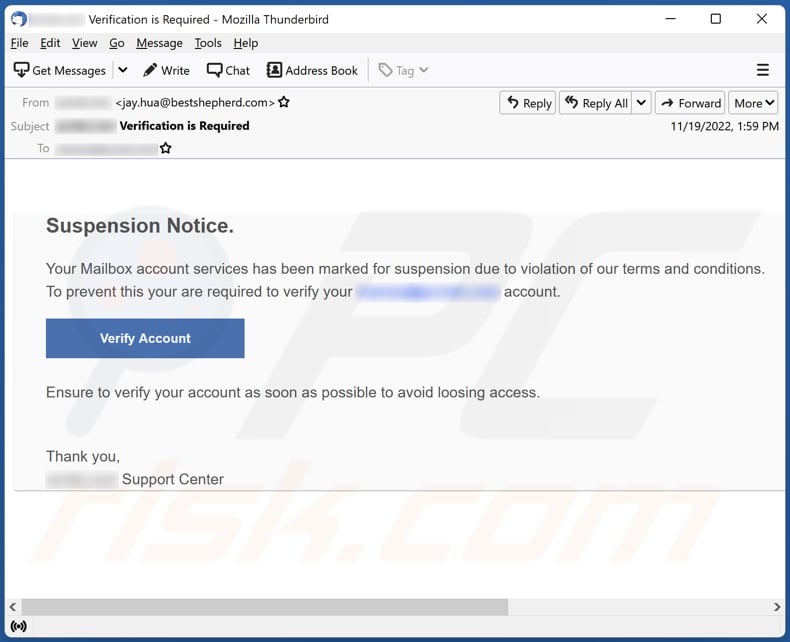
"Suspension Notice" email scam overview
The spam email with the subject "[recipient's_email_address] Verification is Required" states that the mail account has been marked for suspension due to a violation of the service provider's terms and conditions. To prevent losing access to their email, the scam letter urges the recipient to verify the account.
As mentioned in the introduction, all the information provided by this email is false. Hence, once the "Verify Account" button is clicked - it results in a redirect to a phishing website. This site mimics the design of the visitor's email account sign-in page.
When the log-in credentials (passwords) are entered into this phishing website, they are recorded and sent to the scammers behind this spam campaign. With this data in their possession, the cyber criminals can steal not only the email account but potentially the content registered through it.
To elaborate, scammers may gain access to victims' financial accounts (e.g., online banking, e-commerce, digital wallets, etc.) and use them to make unauthorized transactions or online purchases. Cyber criminals can also pretend to be the owner of a hijacked communication account (e.g., emails, social media, social networking, messengers, etc.) and ask the contacts for loans or spread malware by sharing malicious links/files.
In summary, by trusting emails like "Suspension Notice" - users can experience system infections, severe privacy issues, financial losses, and even identity theft.
If you have already disclosed your log-in credentials - we advise you to immediately change the passwords of all possibly exposed accounts and contact their official support.
| Name | "Suspension Notice" phishing email |
| Threat Type | Phishing, Scam, Social Engineering, Fraud |
| Fake Claim | Recipient's email account may be suspended due to violated terms and conditions. |
| Symptoms | Unauthorized online purchases, changed online account passwords, identity theft, illegal access of the computer. |
| Distribution methods | Deceptive emails, rogue online pop-up ads, search engine poisoning techniques, misspelled domains. |
| Damage | Loss of sensitive private information, monetary loss, identity theft. |
| Malware Removal (Windows) |
To eliminate possible malware infections, scan your computer with legitimate antivirus software. Our security researchers recommend using Combo Cleaner. Download Combo CleanerTo use full-featured product, you have to purchase a license for Combo Cleaner. 7 days free trial available. Combo Cleaner is owned and operated by RCS LT, the parent company of PCRisk.com. |
Phishing spam campaign examples
We have inspected thousands of spam emails; "Mail Server Update", "Annual Email Version Upgrade", "Your Organization Needs More Information To Keep Your Account Secure" are merely a few examples of phishing campaigns.
In addition to various scams, this mail is used to distribute trojans, ransomware, cryptocurrency miners, and other malware. These letters can be basic and poorly written or sophisticated and closely mimic messages from legitimate companies, service providers, institutions, authorities, and other entities.
How do spam campaigns infect computers?
Spam campaigns spread malware by distributing infectious files. The emails can have the files as attachments or contain download links (leading to malicious sites tricking users into downloading/installing malware or designed to infiltrate it stealthily).
Virulent files can be Microsoft Office and PDF documents, archives (RAR, ZIP, etc.), executables (.exe, .run, etc.), JavaScript, and so forth. When such a file is executed, run, or otherwise opened - malware download/installation is jumpstarted. For example, Microsoft Office documents infect devices by executing malicious macro commands.
How to avoid installation of malware?
We strongly recommend being vigilant with incoming emails, PMs/DMs, SMSes, and other messages. The attachments/links found in suspicious mail - must not be opened, as they can be malicious and cause infections. It is essential to use post-2010 Microsoft Office versions since they have the "Protected View" mode that prevents automatic macro execution.
However, since malware is not distributed only via spam mail - we also advise downloading from official/verified sources. Additionally, it is important to activate/update software using legitimate functions/tools, as illegal activation ("cracking") tools and fake updaters may contain malware.
Another recommendation is to be cautious when browsing since fraudulent and malicious content typically appears ordinary and innocuous.
We must emphasize the importance of having a reputable anti-virus installed and kept updated. Security programs must be used to run regular system scans and to remove detected threats and issues. If you've already opened malicious attachments, we recommend running a scan with Combo Cleaner Antivirus for Windows to automatically eliminate infiltrated malware.
Text presented in the "Suspension Notice" spam email letter:
Subject: ******** Verification is Required
Suspension Notice.
Your Mailbox account services has been marked for suspension due to violation of our terms and conditions.
To prevent this your are required to verify your ******** account.
Verify Account
Ensure to verify your account as soon as possible to avoid loosing access.
Thank you,
******** Support Center
Screenshot of the phishing website promoted by the "Suspension Notice" spam campaign:
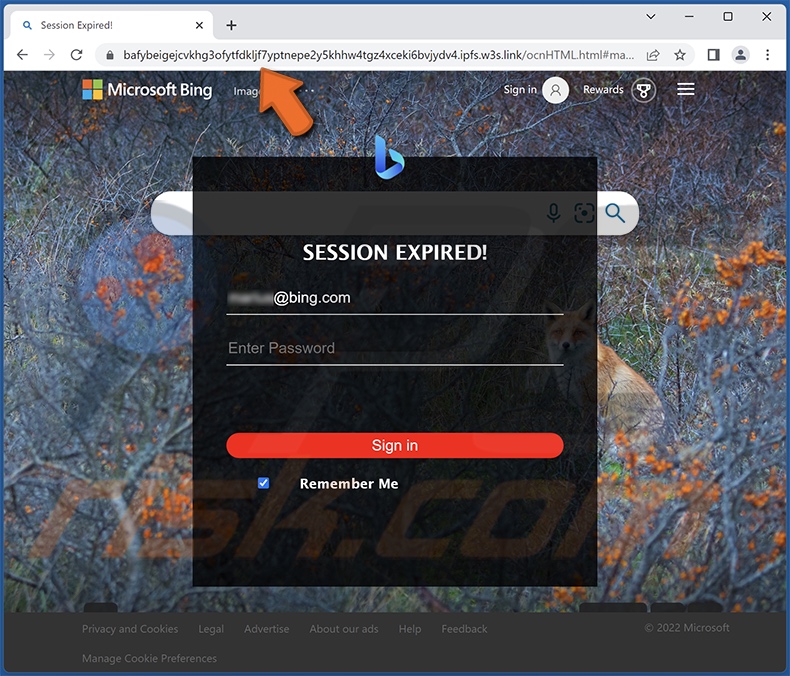
Other examples of Suspension Notice-themed spam emails promoting a phishing sites:
Sample 1:
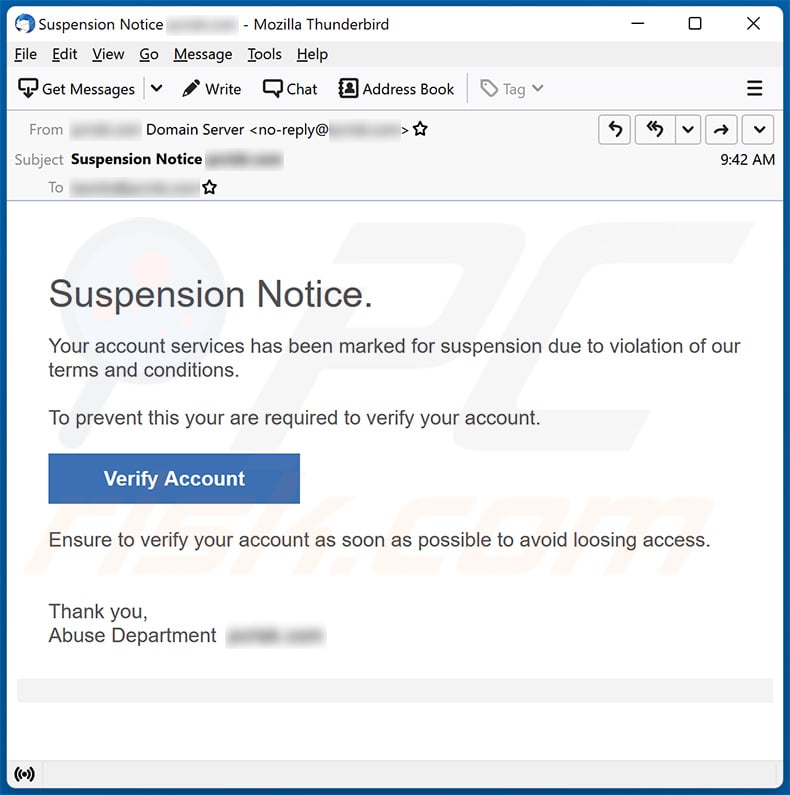
Text presented within:
Subject: Suspension Notice ********
Suspension Notice.Your account services has been marked for suspension due to violation of our terms and conditions.
To prevent this your are required to verify your account.
Verify Account
Ensure to verify your account as soon as possible to avoid loosing access.
Thank you,
Abuse Department ********
Sample 2 (distributes a phishing HTML document):
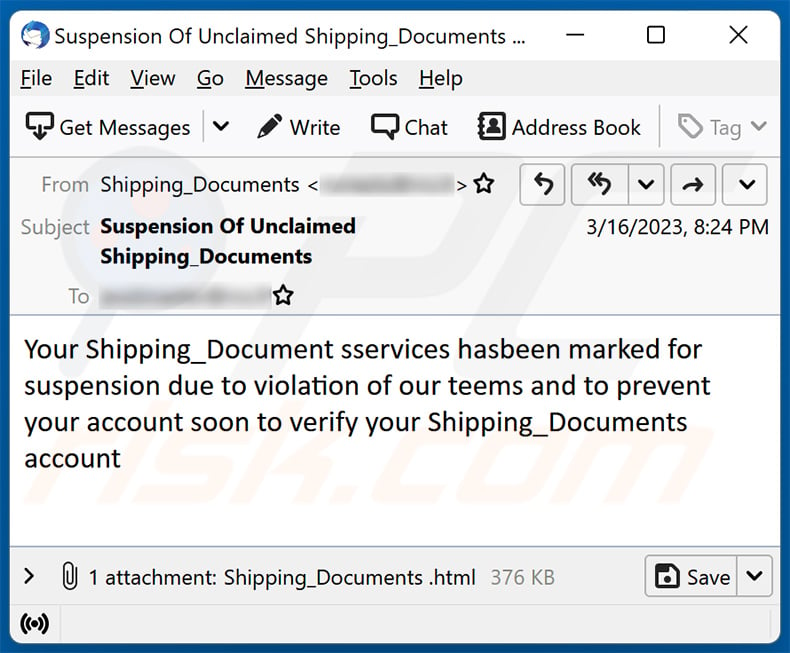
Text presented within:
Subject: Suspension Of Unclaimed Shipping_Documents
Your Shipping_Document sservices hasbeen marked for suspension due to violation of our teems and to prevent your account soon to verify your Shipping_Documents account
Screenshot of the attached HTML document:
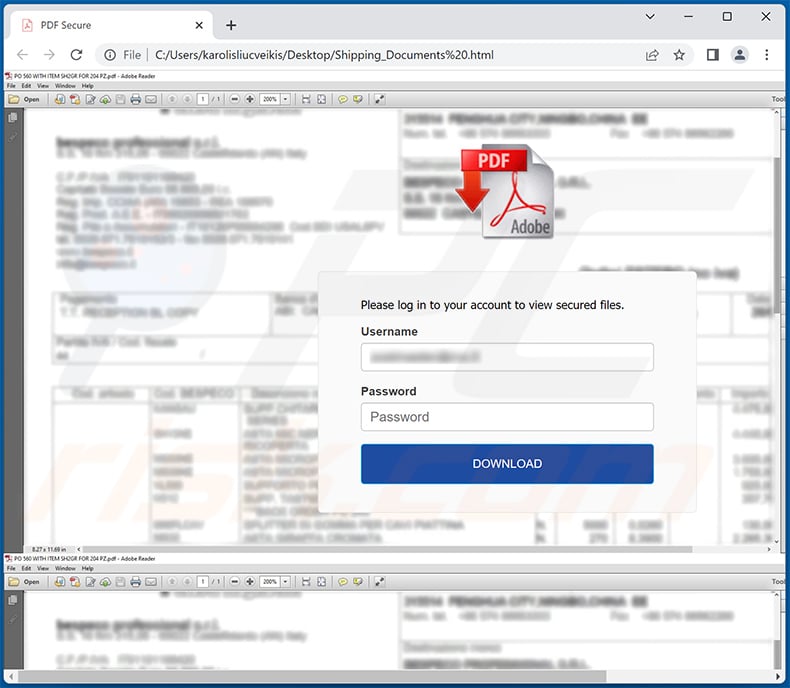
Sample 3:
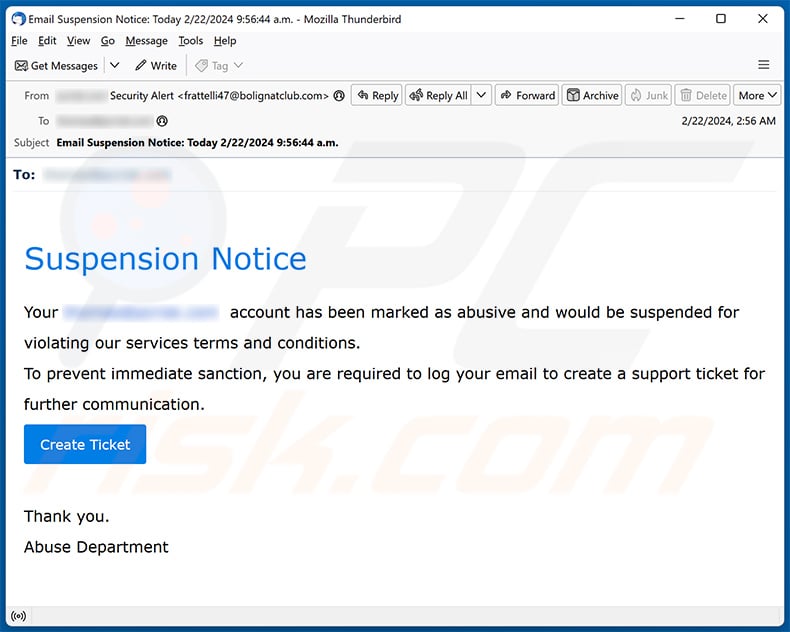
Text presented within:
Subject: Email Suspension Notice: Today 2/22/2024 9:56:44 a.m.
To: ********
Suspension Notice
Your ******** account has been marked as abusive and would be suspended for violating our services terms and conditions.
To prevent immediate sanction, you are required to log your email to create a support ticket for further communication.
Create TicketThank you.
Abuse Department
Screenshot of the promoted phishing site:
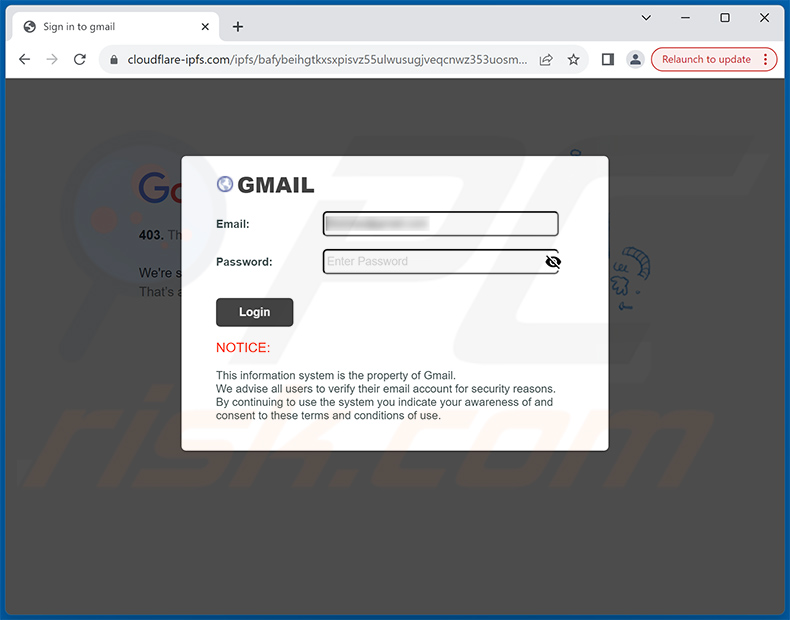
Sample 4:
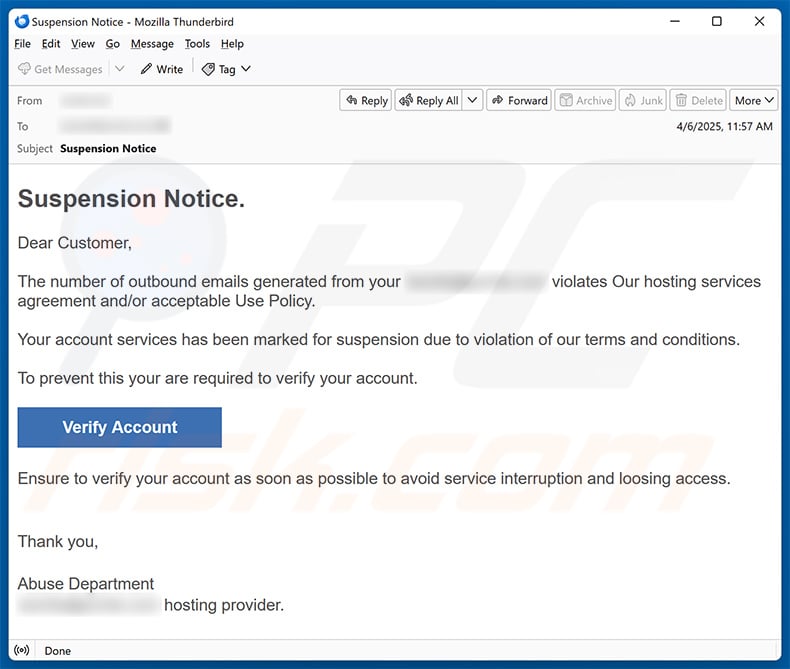
Text presented within:
Suspension Notice.
Dear Customer,
The number of outbound emails generated from your ******** violates Our hosting services agreement and/or acceptable Use Policy.
Your account services has been marked for suspension due to violation of our terms and conditions.
To prevent this your are required to verify your account.
Verify Account
Ensure to verify your account as soon as possible to avoid service interruption and loosing access.
Thank you,
Abuse Department
******** hosting provider.
Screenshot of the promoted phishing site:
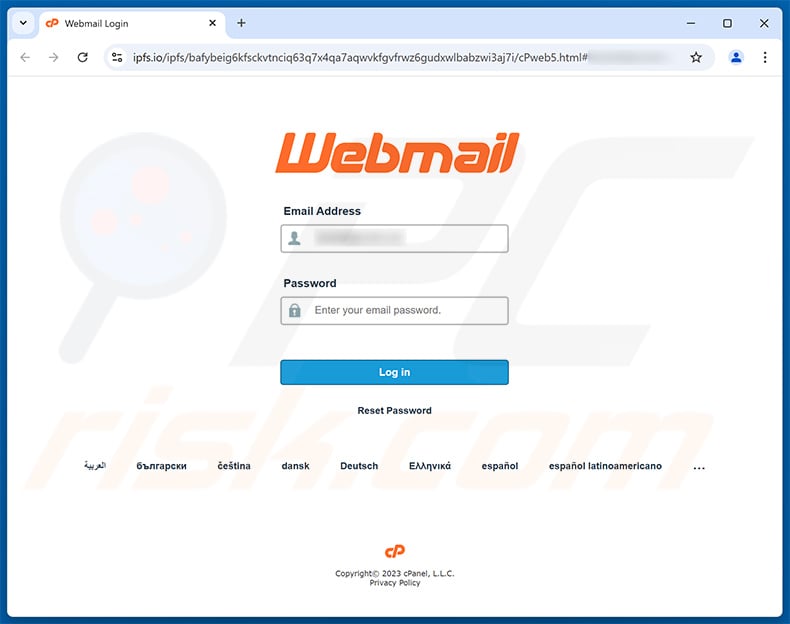
Sample 6:
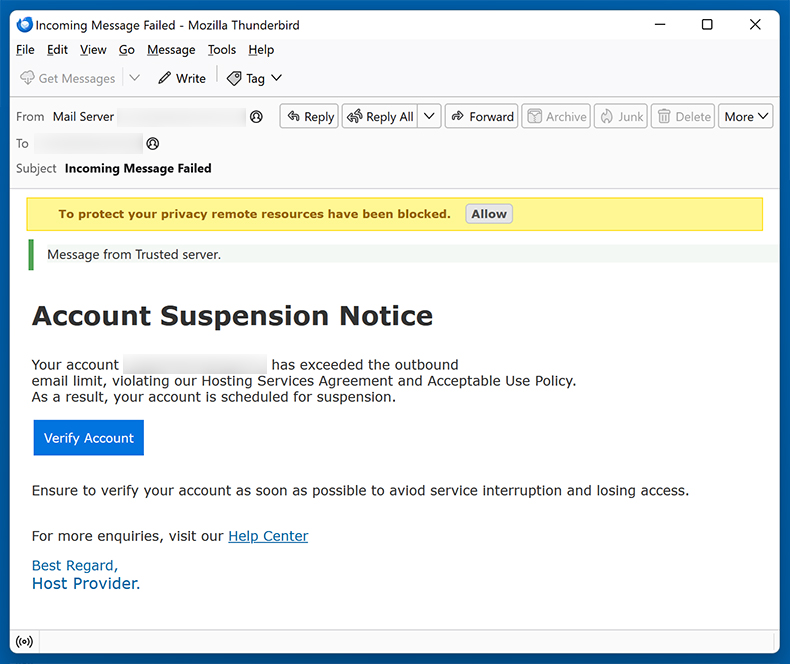
Text presented within:
Subject: Incoming Message Failed
To protect your privacy remote resources have been blocked. Allow
Message from Trusted server.Account Suspension Notice
Your account "********" has exceeded the outbound
email limit, violating our Hosting Services Agreement and Acceptable Use Policy.
As a result, your account is scheduled for suspension.Verify Account
Ensure to verify your account as soon as possible to aviod service interruption and losing access.
For more enquiries, visit our Help Center
Best Regard,
Host Provider.
Sample 7:
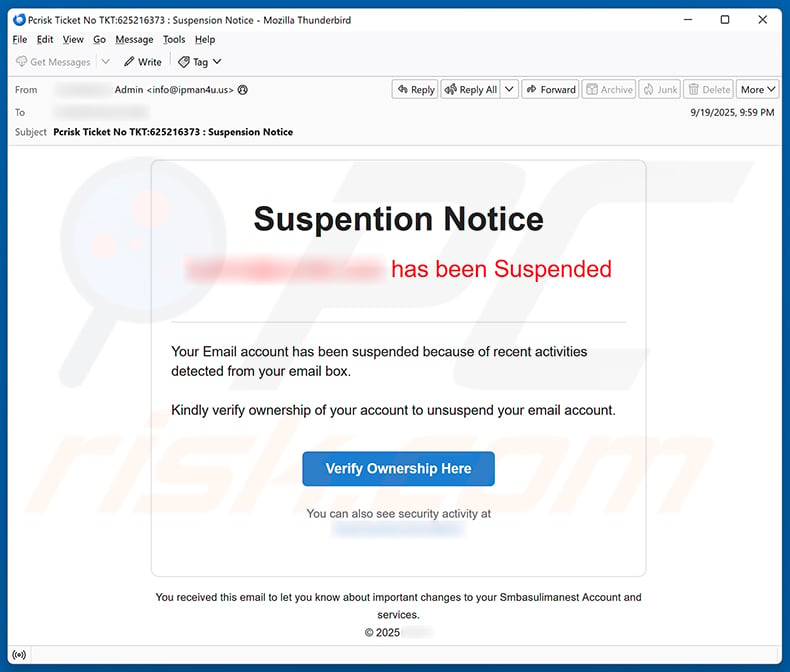
Text presented within:
Subject: ******** Ticket No TKT:625216373 : Suspension Notice
Suspention Notice
******** has been Suspended
Your Email account has been suspended because of recent activities detected from your email box.
Kindly verify ownership of your account to unsuspend your email account.
Verify Ownership Here
You can also see security activity at
******** /activity
You received this email to let you know about important changes to your Smbasulimanest Account and services.
© 2025 ********
Screenshot of the promoted phishing site designed to imitate recipient's email service provider:
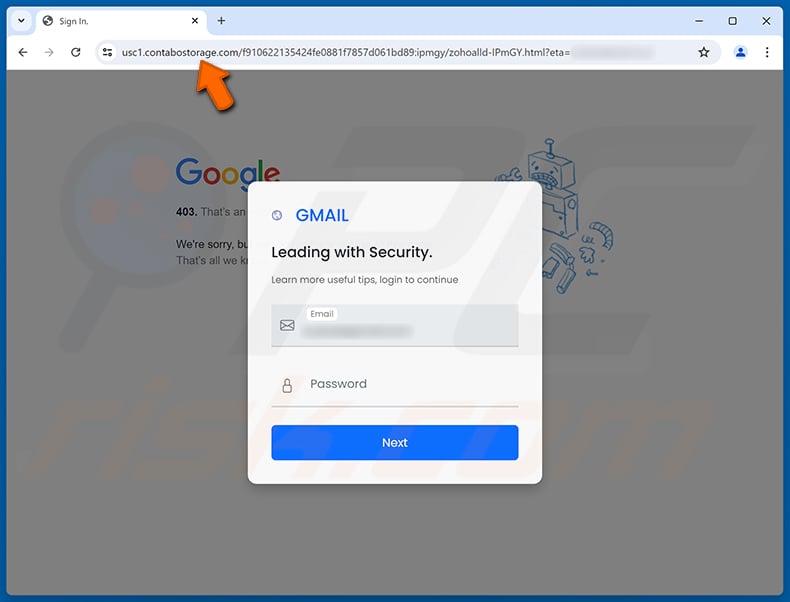
Sample 8:
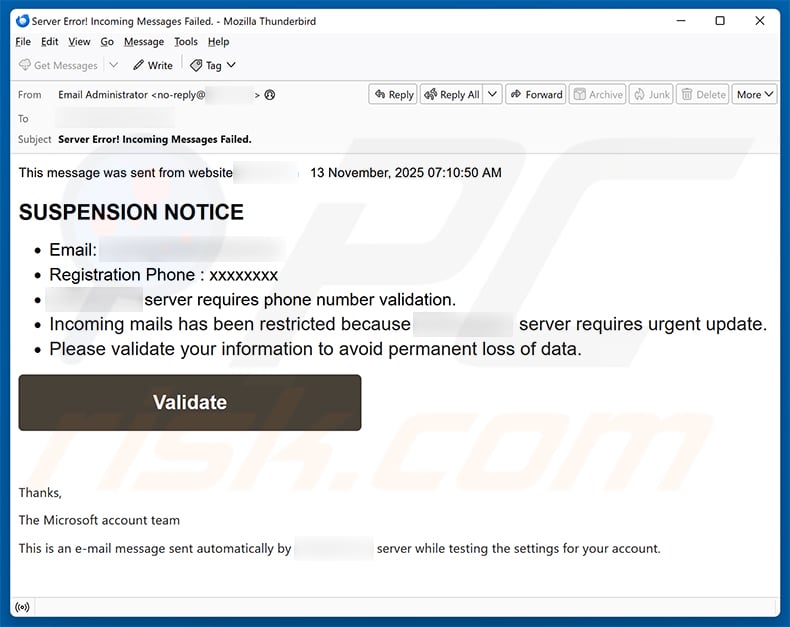
Text presented within:
Subject: Server Error! Incoming Messages Failed.
This message was sent from website ******** 13 November, 2025 07:10:50 AM
SUSPENSION NOTICE
Email: ********
Registration Phone : xxxxxxxx
******** server requires phone number validation.
Incoming mails has been restricted because ******** server requires urgent update.
Please validate your information to avoid permanent loss of data.Validate
Thanks,
The Microsoft account team
This is an e-mail message sent automatically by ******** server while testing the settings for your account.
Instant automatic malware removal:
Manual threat removal might be a lengthy and complicated process that requires advanced IT skills. Combo Cleaner is a professional automatic malware removal tool that is recommended to get rid of malware. Download it by clicking the button below:
DOWNLOAD Combo CleanerBy downloading any software listed on this website you agree to our Privacy Policy and Terms of Use. To use full-featured product, you have to purchase a license for Combo Cleaner. 7 days free trial available. Combo Cleaner is owned and operated by RCS LT, the parent company of PCRisk.com.
Quick menu:
- What is "Suspension Notice" phishing email?
- Types of malicious emails.
- How to spot a malicious email?
- What to do if you fell for an email scam?
Types of malicious emails:
![]() Phishing Emails
Phishing Emails
Most commonly, cybercriminals use deceptive emails to trick Internet users into giving away their sensitive private information, for example, login information for various online services, email accounts, or online banking information.
Such attacks are called phishing. In a phishing attack, cybercriminals usually send an email message with some popular service logo (for example, Microsoft, DHL, Amazon, Netflix), create urgency (wrong shipping address, expired password, etc.), and place a link which they hope their potential victims will click on.
After clicking the link presented in such email message, victims are redirected to a fake website that looks identical or extremely similar to the original one. Victims are then asked to enter their password, credit card details, or some other information that gets stolen by cybercriminals.
![]() Emails with Malicious Attachments
Emails with Malicious Attachments
Another popular attack vector is email spam with malicious attachments that infect users' computers with malware. Malicious attachments usually carry trojans that are capable of stealing passwords, banking information, and other sensitive information.
In such attacks, cybercriminals' main goal is to trick their potential victims into opening an infected email attachment. To achieve this goal, email messages usually talk about recently received invoices, faxes, or voice messages.
If a potential victim falls for the lure and opens the attachment, their computers get infected, and cybercriminals can collect a lot of sensitive information.
While it's a more complicated method to steal personal information (spam filters and antivirus programs usually detect such attempts), if successful, cybercriminals can get a much wider array of data and can collect information for a long period of time.
![]() Sextortion Emails
Sextortion Emails
This is a type of phishing. In this case, users receive an email claiming that a cybercriminal could access the webcam of the potential victim and has a video recording of one's masturbation.
To get rid of the video, victims are asked to pay a ransom (usually using Bitcoin or another cryptocurrency). Nevertheless, all of these claims are false - users who receive such emails should ignore and delete them.
How to spot a malicious email?
While cyber criminals try to make their lure emails look trustworthy, here are some things that you should look for when trying to spot a phishing email:
- Check the sender's ("from") email address: Hover your mouse over the "from" address and check if it's legitimate. For example, if you received an email from Microsoft, be sure to check if the email address is @microsoft.com and not something suspicious like @m1crosoft.com, @microsfot.com, @account-security-noreply.com, etc.
- Check for generic greetings: If the greeting in the email is "Dear user", "Dear @youremail.com", "Dear valued customer", this should raise suspiciousness. Most commonly, companies call you by your name. Lack of this information could signal a phishing attempt.
- Check the links in the email: Hover your mouse over the link presented in the email, if the link that appears seems suspicious, don't click it. For example, if you received an email from Microsoft and the link in the email shows that it will go to firebasestorage.googleapis.com/v0... you shouldn't trust it. It's best not to click any links in the emails but to visit the company website that sent you the email in the first place.
- Don't blindly trust email attachments: Most commonly, legitimate companies will ask you to log in to their website and to view any documents there; if you received an email with an attachment, it's a good idea to scan it with an antivirus application. Infected email attachments are a common attack vector used by cybercriminals.
To minimise the risk of opening phishing and malicious emails we recommend using Combo Cleaner Antivirus for Windows.
Example of a spam email:

What to do if you fell for an email scam?
- If you clicked on a link in a phishing email and entered your password - be sure to change your password as soon as possible. Usually, cybercriminals collect stolen credentials and then sell them to other groups that use them for malicious purposes. If you change your password in a timely manner, there's a chance that criminals won't have enough time to do any damage.
- If you entered your credit card information - contact your bank as soon as possible and explain the situation. There's a good chance that you will need to cancel your compromised credit card and get a new one.
- If you see any signs of identity theft - you should immediately contact the Federal Trade Commission. This institution will collect information about your situation and create a personal recovery plan.
- If you opened a malicious attachment - your computer is probably infected, you should scan it with a reputable antivirus application. For this purpose, we recommend using Combo Cleaner Antivirus for Windows.
- Help other Internet users - report phishing emails to Anti-Phishing Working Group, FBI’s Internet Crime Complaint Center, National Fraud Information Center and U.S. Department of Justice.
Frequently Asked Questions (FAQ)
Why did I receive this email?
Spam emails are not personal. Cyber criminals distribute them in massive operations with the hopes that at least some recipients will fall for their scams.
I have provided my personal information when tricked by this spam email, what should I do?
If you have provided log-in credentials - change the passwords of all potentially exposed accounts and inform their official support without delay. And if you've disclosed other private data (e.g., ID card details, credit card numbers, etc.) - immediately contact the appropriate authorities.
I have read a spam email but didn't open the attachment, is my computer infected?
No, just opening an email will not result in an infection. Malware download/installation processes are initiated when the attachments or links found in spam mail are opened/clicked.
I have downloaded and opened a file attached to a spam email, is my computer infected?
If it was an executable (.exe, .run, etc.) - most likely, yes - your system was infected. However, if it was a document (.doc, .xls, .pdf, etc.), you might have avoided triggering an infection. These formats may need additional user interaction (e.g., enabling macro commands) to start downloading/installing malware.
Will Combo Cleaner remove malware infections present in email attachments?
Yes, Combo Cleaner is capable of detecting and eliminating nearly all known malware infections. It must be stressed that running a full system scan is crucial - since sophisticated malicious programs typically hide deep within systems.
Share:

Tomas Meskauskas
Expert security researcher, professional malware analyst
I am passionate about computer security and technology. I have an experience of over 10 years working in various companies related to computer technical issue solving and Internet security. I have been working as an author and editor for pcrisk.com since 2010. Follow me on Twitter and LinkedIn to stay informed about the latest online security threats.
PCrisk security portal is brought by a company RCS LT.
Joined forces of security researchers help educate computer users about the latest online security threats. More information about the company RCS LT.
Our malware removal guides are free. However, if you want to support us you can send us a donation.
DonatePCrisk security portal is brought by a company RCS LT.
Joined forces of security researchers help educate computer users about the latest online security threats. More information about the company RCS LT.
Our malware removal guides are free. However, if you want to support us you can send us a donation.
Donate
▼ Show Discussion